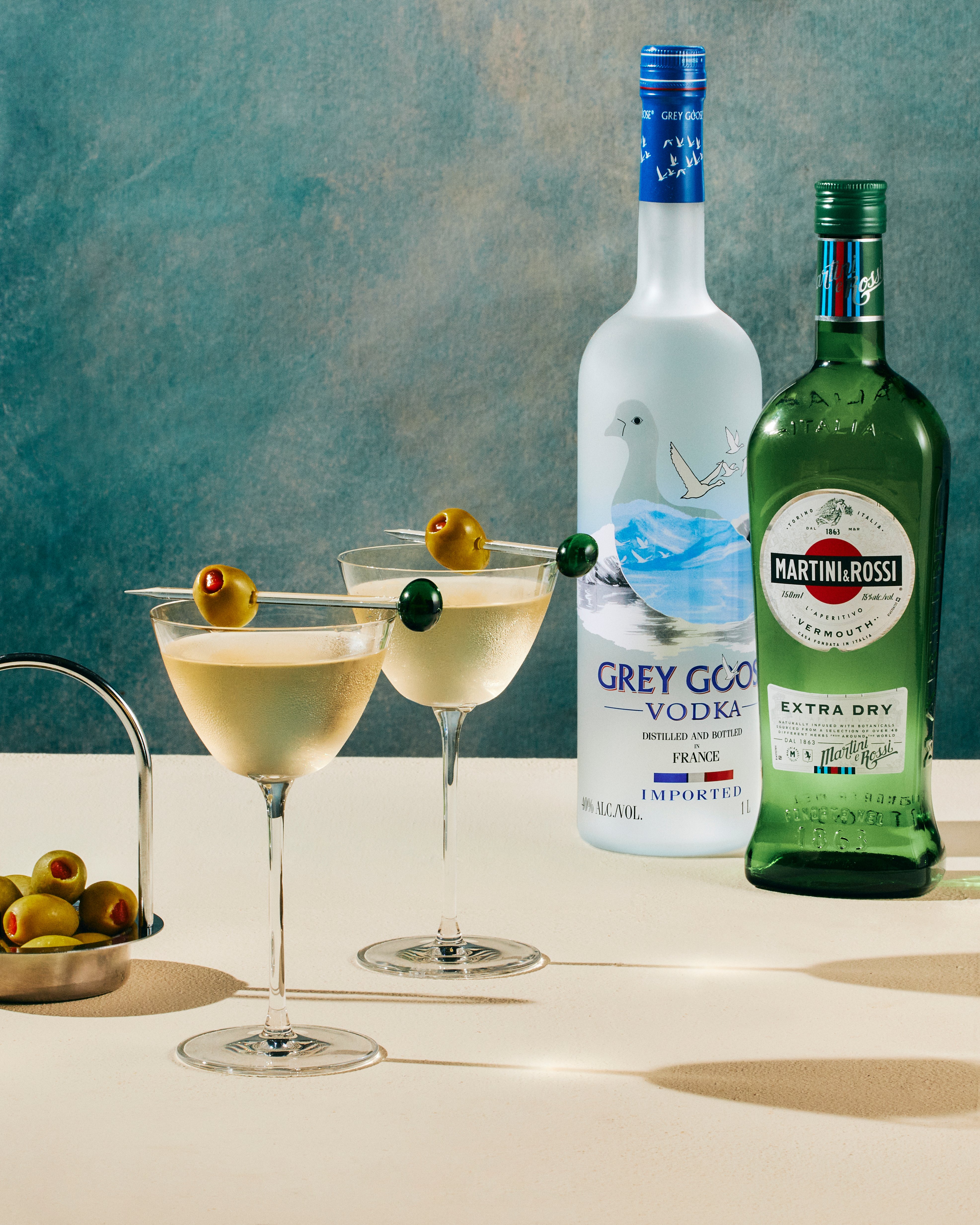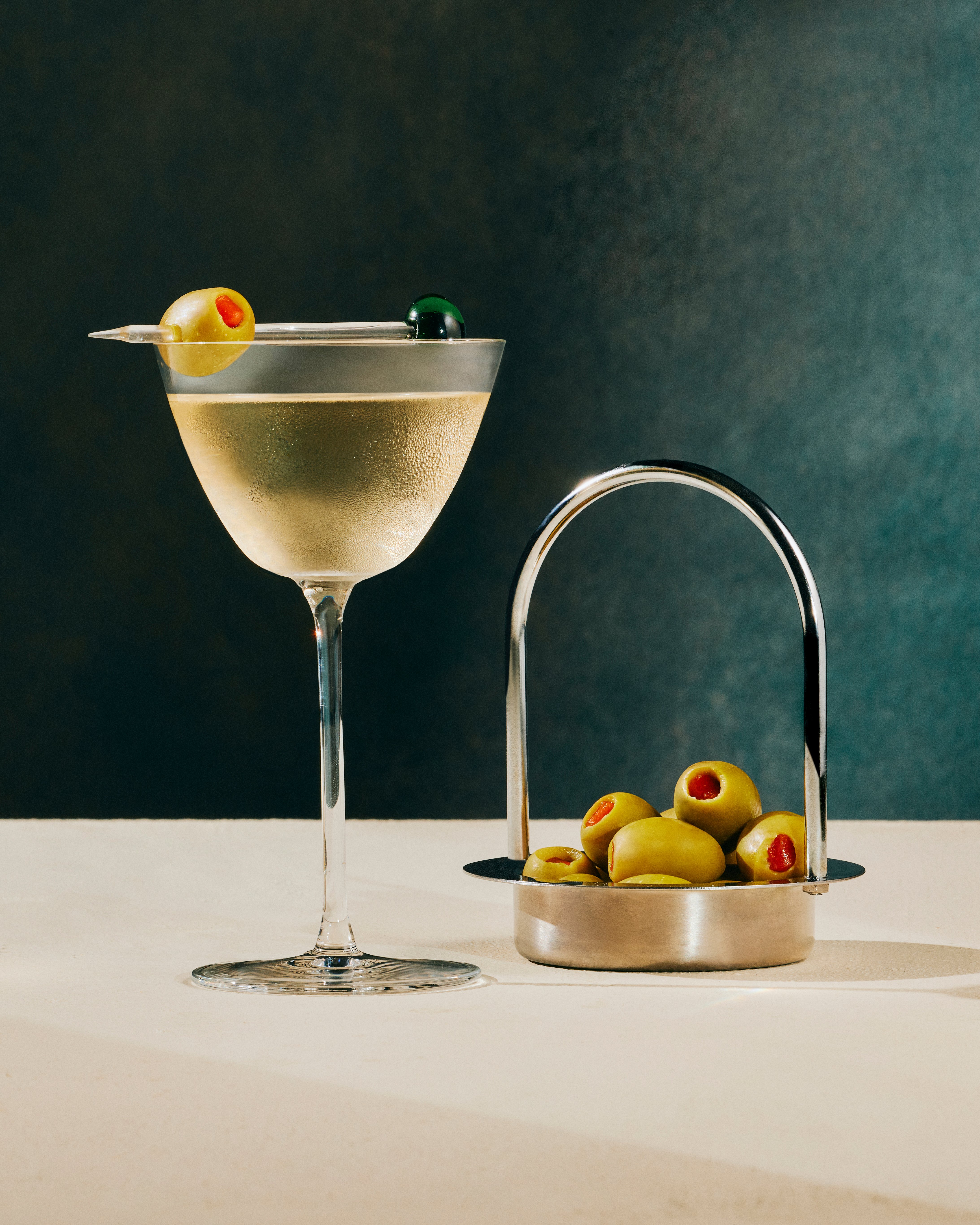Why The Wet Martini Just Might Save The 3 Martini Lunch
The 50/50 martini, comprised equal parts gin or vodka and high-quality vermouth, makes for a decidedly more sessionable cocktail.

Over a long career, London bartender Alessandro Palazzi has made a name for himself among martini fans. The head bartender of Duke’s Bar (rumored to have inspired Ian Fleming and his “shaken not stirred” secret agent) has perfected what many would call the perfect dry martini.
Palazzi’s technique is simple: He emerges with a small trolley to prepare the drinks tableside. First, a few drops of vermouth are sprinkled into the bottom of a chilled glass. Next, he produces a near-frozen bottle of vodka or gin (both for Vespers), which he free-pours directly into the glass before garnishing with gorgeous twists of lemon or olives. It’s a bracing drink—the freezer-housed ingredients make near-straight gin not just palatable but gorgeously aromatic and lush on the tongue. It’s also a strong drink—one Duke’s will only serve two per guest, per visit.
If this sounds like the perfect martini to you, it’s likely because you’ve mostly been served dry martinis (occasionally dirty) at a majority of bars, by bartenders who understand that it’s the popular form for a martini to take. But in recent years, the dry martini’s lesser-known sibling, the “wet martini” has begun to garner some of the spotlight.
The most recent virality began in the New York Times. Recently-retired restaurant critic Pete Wells declared earlier this year that after decades of dry drinks, it was time to accept the era of the wet martini—a floral and refreshing flip of the norm.
“Wet” includes any martini recipe where at least half of the volume is vermouth (You may already know the “wet martini” by another name—the 50/50 martini). The drink is less strange to European palates, which are more accustomed to lo-fi beverages associated with the aperitivo hour. If you’ve enjoyed a spritz, highball, or a Campari soda, you’ll already see where this is going.
“The 50/50 ratio can be seen as a more ‘mindful’ martini option,” says Fabio Raffaelli, North America Brand Ambassador for Martini & Rossi, “for when you still want a classic cocktail, but one that’s not as spirit-forward.”
Raffaelli has been working in the bar world for nearly two decades, many of which were spent in the sort of places Fleming’s Bond might don a swimsuit or tuxedo.

“Vermouth has always been popular in Europe, but it’s taken a longer time to catch on in the U.S., Raffaelli explains. “In the past, it’s been thought of simply as an ingredient in a cocktail. However, more recently, aperitivo culture has become popular in the United States. Americans are starting to appreciate vermouth-based serves — like a Bianco Spritz, which is made simply with Martini & Rossi Bianco and tonic water.”
“The wet martini is a nice common ground that all martini drinkers can appreciate,” Raffaelli says, “and you can also put your own spin on the wet martini–whether it’s a garnish of choice, or choosing between gin or vodka.
As for the James Bond question, Raffaelli is open-minded but has a preference. “In theory, you can shake or stir a wet martini,” he acknowledges, “but for the most flavorful result, it’s best to stir the wet martini. Shaking a wet martini will allow the ice to melt faster and, therefore, add too much water to the serve. Over-diluting a wet martini would reduce and diminish the aromatic notes of the vermouth. A stirred wet martini best honors the 50/50 ratio.”
I asked Rafaelli what the consensus is on a “wet” recipe for a freezer martini—a pre-batched martini in a larger bottle and stowed away in the freezer until it’s time to serve. Rafaelli says it’s fine to do with this lower-ABV option, and won’t turn to a slushy nightmare in your freezer—something extremely low ABV cocktails can do.
Raffaelli thinks that vermouth will continue to get more popular in the U.S., and that’s likely true, especially as education about proper vermouth storage (store in the fridge, discard after two months) comes to the masses. Part of the reason it has taken so long for wet martinis to gain a foothold in the U.S. may very well be that neglected bottles of stale vermouth were being treated like higher-ABV spirits that have longer shelf lives.
“Because vermouth has a greater presence in a wet martini, the quality of vermouth is even more important. A low-quality vermouth will show flat, dull flavors that will diminish the overall taste and balance of the serve.”
But the wet martini has a home in places where the dry martini was once king, namely the three-martini lunch. Modern times have caused us to look upon stiff lunch beverages with concern and even contempt, but no one bats at eye at a beer or a spritz, both of which are in a similar alcohol content range to the wet martini.
Gin and vodka lovers, of course, may balk at the idea of inverting their favorite cocktail, and I’m certainly not in the business of forcing someone to change their order. But it speaks to the greatness of the martini in the pantheon of classic drinks that there can be so many people who love the drink, as long as it’s made just right—just the way they like it.
G. Clay Whittaker is a Maxim contributor covering lifestyle, whiskey, cannabis and travel. His work has also appeared in Bon Appetit, Men’s Journal, Cigar Aficionado, Playboy and Esquire. Subscribe to his newsletter Drinks & Stuff for perspectives on drinks, and stuff.
